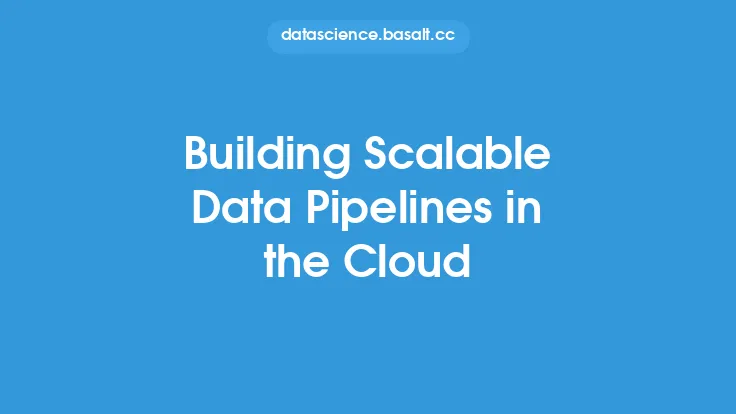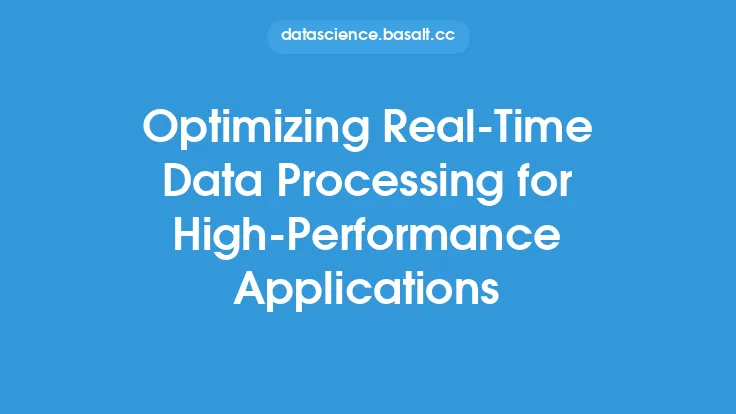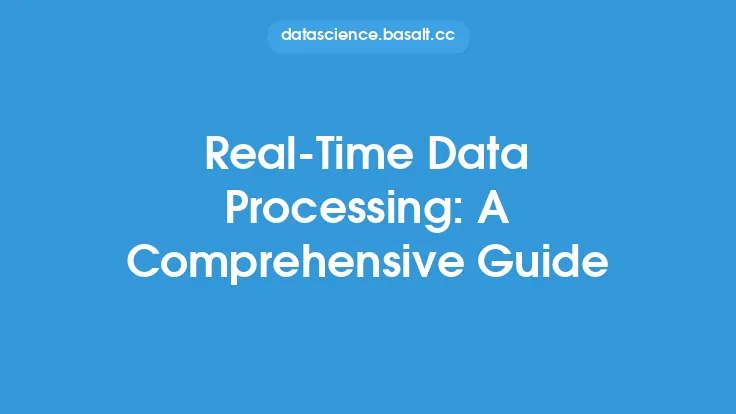Building scalable real-time data pipelines is a crucial aspect of data engineering, as it enables organizations to process and analyze large volumes of data in a timely and efficient manner. One of the key technologies that can help achieve this goal is Apache Beam, an open-source unified programming model for both batch and streaming data processing. In this article, we will delve into the details of building scalable real-time data pipelines with Apache Beam, exploring its features, benefits, and best practices.
Introduction to Apache Beam
Apache Beam is a unified programming model that allows developers to define data processing pipelines using a single API, which can then be executed on various execution engines, such as Google Cloud Dataflow, Apache Flink, Apache Spark, and Apache Apex. This flexibility makes it an ideal choice for building scalable real-time data pipelines, as it enables developers to write their code once and run it on different platforms. Apache Beam provides a rich set of features, including support for batch and streaming data processing, data integration, and data transformation.
Key Features of Apache Beam
Apache Beam has several key features that make it well-suited for building scalable real-time data pipelines. These include:
- Unified Programming Model: Apache Beam provides a single API for both batch and streaming data processing, making it easier for developers to write and maintain their code.
- Execution Engine Flexibility: Apache Beam pipelines can be executed on various execution engines, including Google Cloud Dataflow, Apache Flink, Apache Spark, and Apache Apex.
- Data Integration: Apache Beam provides a range of data integration features, including support for various data sources and sinks, such as files, databases, and messaging systems.
- Data Transformation: Apache Beam provides a range of data transformation features, including support for mapping, filtering, and aggregating data.
Building Real-Time Data Pipelines with Apache Beam
Building real-time data pipelines with Apache Beam involves several steps, including:
- Defining the Pipeline: The first step is to define the pipeline using the Apache Beam API. This involves specifying the data sources, data transformations, and data sinks.
- Configuring the Pipeline: Once the pipeline is defined, the next step is to configure it for execution. This involves specifying the execution engine, as well as any other configuration options, such as the pipeline's parallelism level.
- Executing the Pipeline: The final step is to execute the pipeline. This can be done using the Apache Beam SDK, or by using a command-line tool, such as the Apache Beam CLI.
Best Practices for Building Scalable Real-Time Data Pipelines
When building scalable real-time data pipelines with Apache Beam, there are several best practices to keep in mind. These include:
- Use a Unified Programming Model: Using a unified programming model, such as Apache Beam, can make it easier to write and maintain code, as well as reduce the complexity of the pipeline.
- Choose the Right Execution Engine: Choosing the right execution engine for the pipeline is critical, as it can affect the pipeline's performance and scalability.
- Optimize the Pipeline: Optimizing the pipeline for performance and scalability is critical, as it can affect the pipeline's ability to handle large volumes of data in real-time.
- Monitor and Debug the Pipeline: Monitoring and debugging the pipeline is critical, as it can help identify issues and optimize the pipeline for better performance.
Benefits of Using Apache Beam for Real-Time Data Pipelines
Using Apache Beam for real-time data pipelines has several benefits, including:
- Scalability: Apache Beam pipelines can be scaled to handle large volumes of data in real-time, making it an ideal choice for big data applications.
- Flexibility: Apache Beam provides a unified programming model that can be executed on various execution engines, making it an ideal choice for organizations that need to support multiple platforms.
- Ease of Use: Apache Beam provides a simple and intuitive API that makes it easy to define and execute data pipelines, even for developers without extensive experience in data processing.
- Cost-Effective: Apache Beam is an open-source technology, making it a cost-effective choice for organizations that need to build scalable real-time data pipelines.
Real-World Use Cases for Apache Beam
Apache Beam has several real-world use cases, including:
- Real-Time Analytics: Apache Beam can be used to build real-time analytics pipelines that can process and analyze large volumes of data in real-time.
- IoT Data Processing: Apache Beam can be used to build IoT data processing pipelines that can handle large volumes of sensor data in real-time.
- Log Processing: Apache Beam can be used to build log processing pipelines that can process and analyze large volumes of log data in real-time.
- Machine Learning: Apache Beam can be used to build machine learning pipelines that can process and analyze large volumes of data in real-time.
Conclusion
Building scalable real-time data pipelines is a critical aspect of data engineering, and Apache Beam is a powerful technology that can help achieve this goal. With its unified programming model, execution engine flexibility, and data integration and transformation features, Apache Beam makes it easy to define and execute data pipelines that can handle large volumes of data in real-time. By following best practices and using Apache Beam, organizations can build scalable real-time data pipelines that can support a wide range of use cases, from real-time analytics to IoT data processing.





